To Order Products use link below;
MrTruck’s Top Picks for Pickup Truck Products and Trailer Accessories
Tuson Trailer Tire Pressure Monitor
Class V Truck Hitches
Heavier Duty Towing
How Hitch Manufacturers Are Designing Class-V Hitches To Extreme Capacity Levels
By Dan Sanchez; published originally in Trucking Times mag, TruckingTimes.com

Class V Truck Hitches
As the towing capabilities of late-model trucks increase, hitch and accessory manufacturers are trying to stay ahead and design products that meet or even exceed the truck’s capacities. Over the years light-duty pickup trucks have slowly increased Gross Vehicle Weight Ratings (GVWR) well over 10,000 to 12,000 lbs. So many hitch manufacturers are producing aftermarket Class-V hitches that have weight ratings of up to 17,000 lbs. for standard applications, and up to 20,000 lbs. in commercial applications. “The industry is reacting by making receiver hitches that are rated for a tongue weight more toward 15 percent of the trailer weight, whereas they all previously were around 10 percent,” says Raymond Padgett, VP at Blue Ox. While manufacturers are proud to showcase their improvements on the capabilities of aftermarket hitches, it’s important to find out how manufacturers are doing this, and what measures they are taking to ensure proper testing and quality of the product to meet those demands.
As a starting point, many aftermarket hitch manufacturers follow the SAE J684 standard, which is an active technical report that includes all test parameters of the idle Regulation V-5. “SAE J684 however, only addresses trailer connections whose Gross Vehicle Weight Rating (GVWR) does not exceed Class-IV, 10,000 lbs.(4540 kg), and the latest revision was made in July of 2005,” says Carl Andreasen, project manager at TestLink Services Inc., who provides independent third-party testing for a variety of hitch manufacturers. “The proper scenario is for test standards to be written and published to encompass the full range of hitch capacities in the marketplace. Unfortunately that has not been the case since the late 1990’s.”
The basic industry understanding and acceptance of a Class-V hitch are:
- Class-V hitches are weight carrying (WC) and weight distributing (WD) hitches depending on the vehicle and hitch specifications.
- Class-V hitches used as weight carrying are rated up to 12,000 lbs. gross trailer weight (GTW) with a maximum trailer tongue weight (TW) of 1,200 lbs.
- Class-V hitches used for weight distributing are rated up to 17,000 lbs. gross trailer weight (GTW) with a maximum trailer tongue weight (TW) of 1,700 lbs.
- In order to tow these kinds of weight loads, the ball mount and hitch ball need to be rated for Class-V in order to safely tow these kinds of weight loads.
- Weight distribution systems are required to use a Class-V hitch for weight distribution.
- A Class V hitch has a 2-1/2-inch square receiver opening and should only be attached to the vehicle frame.
“Anyone marketing a Class-V hitch today has probably tested it to exceed SAE Class-IV, 10,000 lbs.,” says Andreasen. “But Class-V is not a category described or covered by SAE.”
New ratings combined with old test standards is leading to some confusion among truck accessory retailers and restylers who may not be familiar with all of the changes. Many feel it’s important to know which products are capable of the Class-V load distinctions, and how to properly adapt them to their customer’s towing needs. “Truck accessory retailers really need to understand the actual weight of the trailer, not just the ratings,” says Padgett. “Use of a tongue scale is becoming essential as trailers are not always loaded ideally, and having a hitch that isn’t configured to the actual tongue weight creates an unsafe situation.”
In addition to using a tongue scale, many hitch manufacturers also feel it is important to carefully examine the specifications listed for each hitch retailers sell, and find how the manufacturer comes up with those ratings. “It is always best to review the manufacturers’ specifications, product label, etc. for the ratings and to determine what testing has been performed,” says Ben Fisher, Director of Engineering and Program Manager at Curt Manufacturing.
To avoid any potential problems and to properly inform retailers and consumers, many hitch manufacturers adhere to the J684 Standards, but also perform their own testing to ensure their products can handle the capacity they’re designed for. “The increase in vehicle towing capabilities has required us to look into different materials, different hardware, and in some instances create new designs,” says Fisher. “We are in support of SAE J684 in the towing industry and play an active role in the development and institution of such standards. However, we continue to develop new designs, new manufacturing methods, and explore the use of non-traditional materials to meet the industry’s and customer’s needs.”
Likewise, manufacturers such as Cequent believe that the J684 standard is a good point of reference, but have developed their own standards that exceed they feel go beyond it. According to Cequent’s product management team, all of the company’s hitches meet or exceed V-5 and SAE J684 standards and are inspected for quality and workmanship throughout fatigue stress testing. As an example, Cequent hitches are designed to withstand SAE J684 standards for applied forces without incurring permanent deformation and are tested so that they do not depart more than 5 degrees from the original, nominally vertical position.
Using SAE J684 as a starting point, and with no universal agreement to what Class-V standards should be, manufacturers are on their own to perform testing and improving the product’s capabilities by various means. For the most part, manufacturers take this very seriously, and publish information about how they achieve higher GVRW ratings. Companies like Curt Manufacturing offer Class-V hitches that are rated from 12,000lbs weight carrying capacity, 14,000lbs weight distributing capacity and up to 1,400lbs tongue weight capacity. Curt’s XTRA Duty hitches are rated up to 17,000lbs weight carrying capacity, up to 17,000lbs weight distributing capacity and up to 2,550lbs tongue weight capacity. Commercial duty hitches are rated up to 20,000lbs weight carrying capacity, 20,000lbs weight distributing capacity and up to 2,700lbs tongue weight capacity. “Ratings are achieved with the use of the proper material, proper hardware and proper design,” says Fisher.
Cequent’s heavy-duty Class-V hitches have undergone a different approach and have adapted to using cast center sections to improve strength. According to Cequent, the company’s Ultra Frame® receiver has a 15 percent tongue and gross towing weight increase because of the use of a cast center section. The company’s Ultra Frame® receivers without a cast center section have up to 1,500lbs/15,000lbs weight carrying and 1,600lbs/16,000lbs weight distributing capacities. Their Ultra Frame® with a cast center section, improves capacity up 2,400lbs/16,000lbs weight carrying and 1,600lbs/16,000lbs weight distributing capacities. The company’s Class V Titan® receivers have up to 2,000lbs/18,000lbs weight carrying and 2,500lbs/18,000lbs weight distributing capacities.
As stated by manufacturers, many of the heavier duty applications require proper weight distribution to handle the heavier capacities, so it’s important for retailers to properly understand and outfit their customers with the right components, based on how the load will be applied to the hitch and vehicle. “By its very nature, weight distributing hitches spread out the forces that would usually push down on the rear of the towing vehicle. This causes problems such as loss of front tire traction, loss of steering, misaligned headlights, excessive sway of the trailer and other issues,” says Padgett. “Many receiver hitches are rated much higher for weight distributing because of this dynamics of spreading out that weight instead of keeping it concentrated over the tongue.”
With this in mind, the potential for customers wanting overkill is a likely scenario. But according to hitch manufacturers, it’s not always a good idea to go that route. Most agree that retailers should ultimately become well informed to the types, capacities, and how hitches are rated and tested, in order to provide the right components for their customer’s unique applications and towing needs. According to the product team at Cequent, Class-V hitches are best used on full-size long wheelbase trucks, vans and utility vehicles with full frames and heavy-duty suspensions. Additionally, they’re ideal for high tongue weight applications (i.e. Toy Hauler & Commercial). “Many people think that going for the heaviest weight distributing hitch possible is the right thing to do, but this causes such a rigid ride that every force is transferred from road to truck to trailer and vice versa,” explained Padgett. “This will cause a much rougher ride for driver and passenger and can cause damage to truck and trailer since they for feeling the full brunt of those road forces.”
” Retailers need to verify the type of hauling the customer will be doing, the size of the trailer the customer owns or will be purchasing, and the weights the customer intends on towing,” says Fisher. “From this information the retailer can then determine the Gross Trailer Weight (GTW) that the customer’s vehicle can safely tow and estimate the Gross Vehicle Weight Rating (GVWR).”
Ultimately it’s up to the retailer to become properly informed as to the ratings of the hitches they sell, and to what extent the hitch manufacturer goes through to meet those capacities. It is also good to know that leading hitch manufacturers have demonstrated that they are dedicated to providing proper component testing and quality control to ensure retailers and their customers, and that the hitches they produce meet the capacity levels advertised. With third party testing from companies like Test Link Services Inc., many hitch manufacturers can improve their designs and provide documentation that proves their products meet or exceed SAE Standards. Until Class-V standards are universally agreed upon by the hitch industry, manufacturers will continue to push the limits of capacity with new designs, stronger components and improved manufacturing techniques that will keep up with the demand for heavier duty towing applications.

Hitch manufacturers like Curt have improved design features on their commercial duty hitches that utilize a cast center section. This allows these model hitches to have 20,000 lbs. WC capacity, 20,000 lbs. WD capacity and up to 2,700 lbs.TW capacity.www.curtmfg.com.
For heavier duty applications, the Reese Titan Class V hitch features a 18,000 lbs. GTW capacity, 2,000 lbs. TW, and 18,000 lbs. WD capacity. www.reese-hitches.com.
applications, the Reese Titan Class V hitch features a 18,000 lbs. GTW capacity, 2,000 lbs. TW, and 18,000 lbs. WD capacity. www.reese-hitches.com.
Weight distribution hitches like Blue Ox’s Sway-Pro are des igned for maximum capacities and prevents excessive wear, while also providing easier vehicle control.www.blueOx.com.
igned for maximum capacities and prevents excessive wear, while also providing easier vehicle control.www.blueOx.com.

Draw-Tite manufactures its Ultra Frame Class V hitch that features 12,000 lbs. GTW, 15,000 lbs. WD capacity, and 1,200lb. TW capacity. www.draw-tite.com.
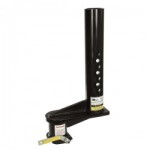










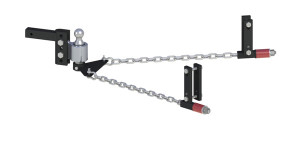
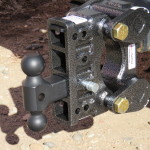
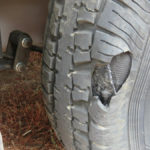


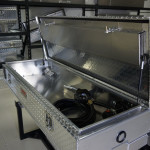
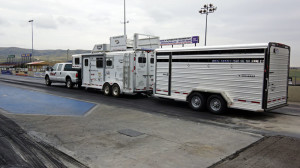


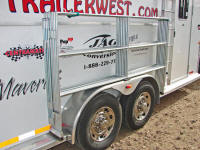

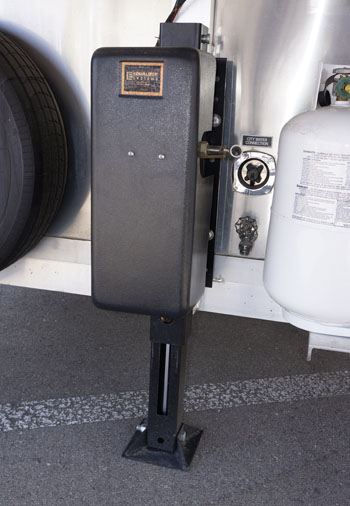


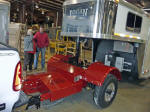








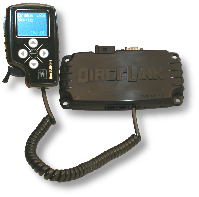



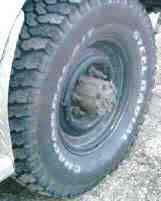
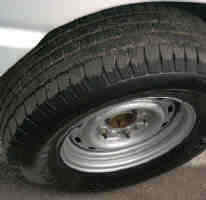
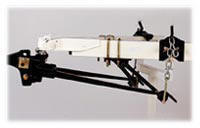

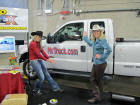
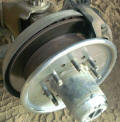
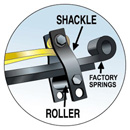
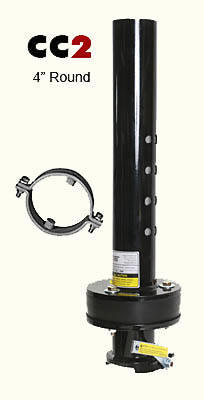



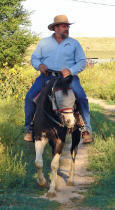

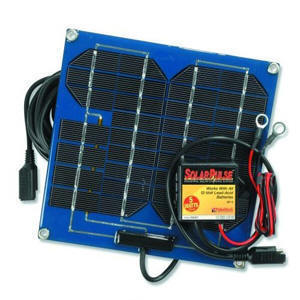
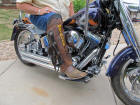

Readers Respond